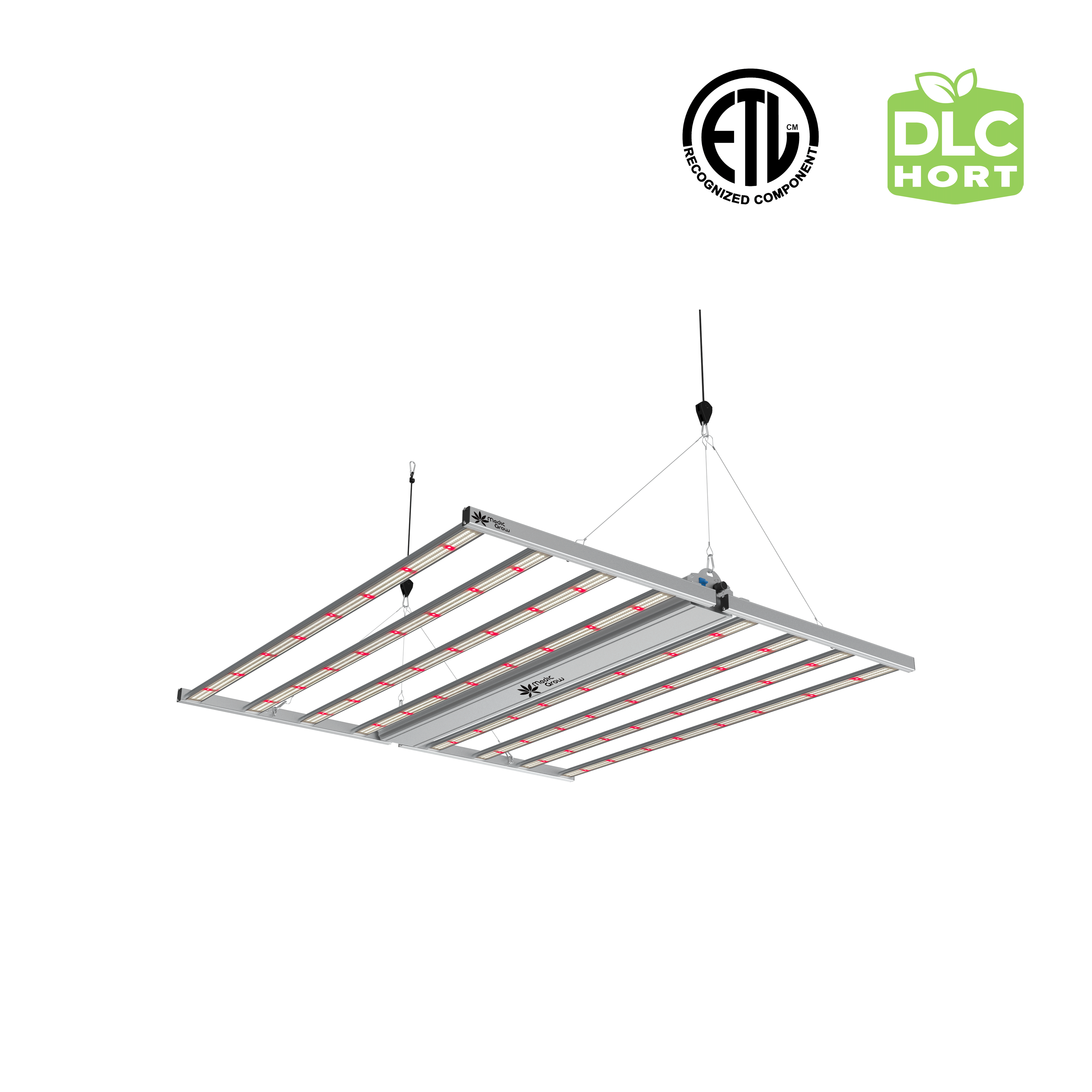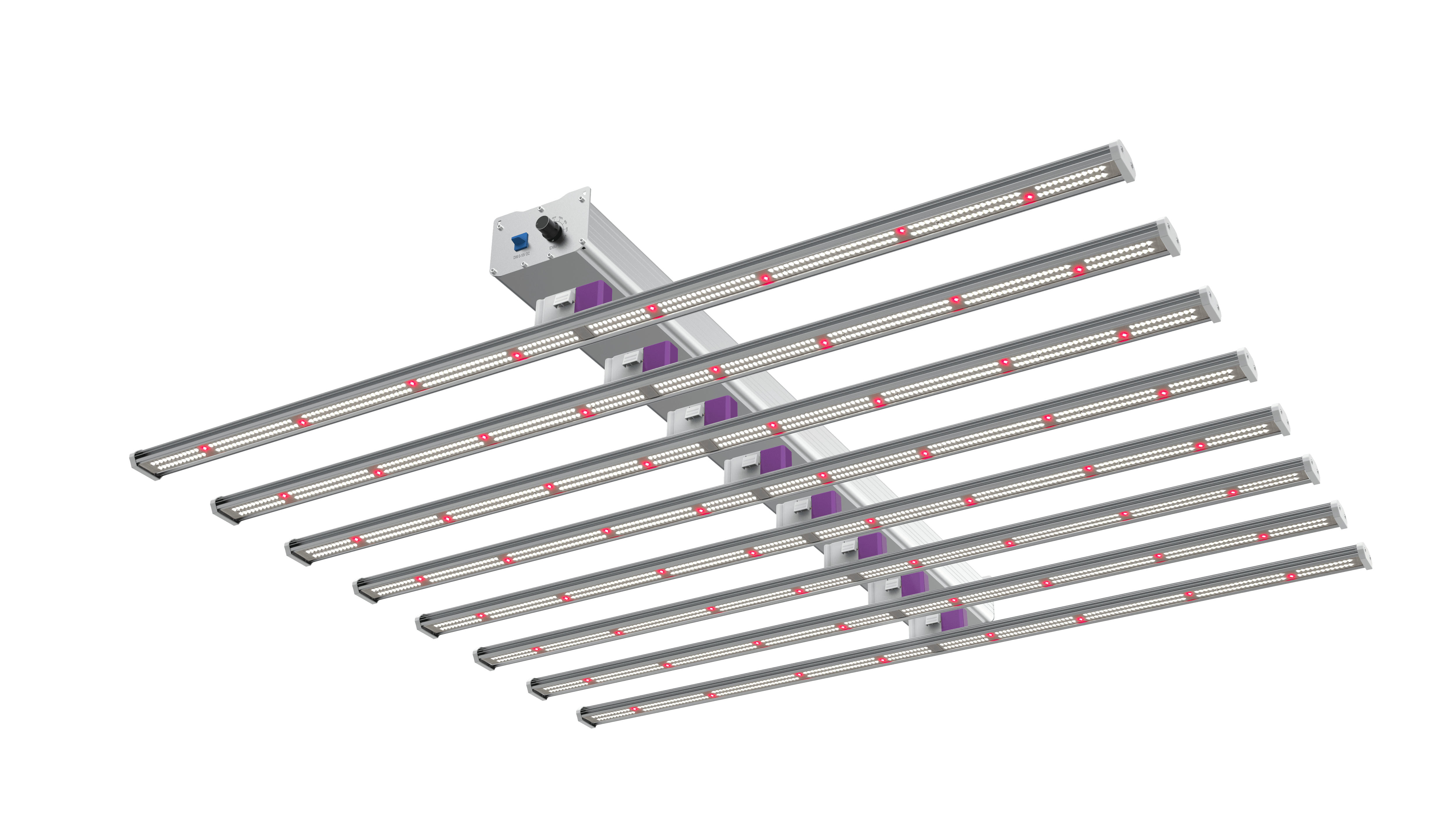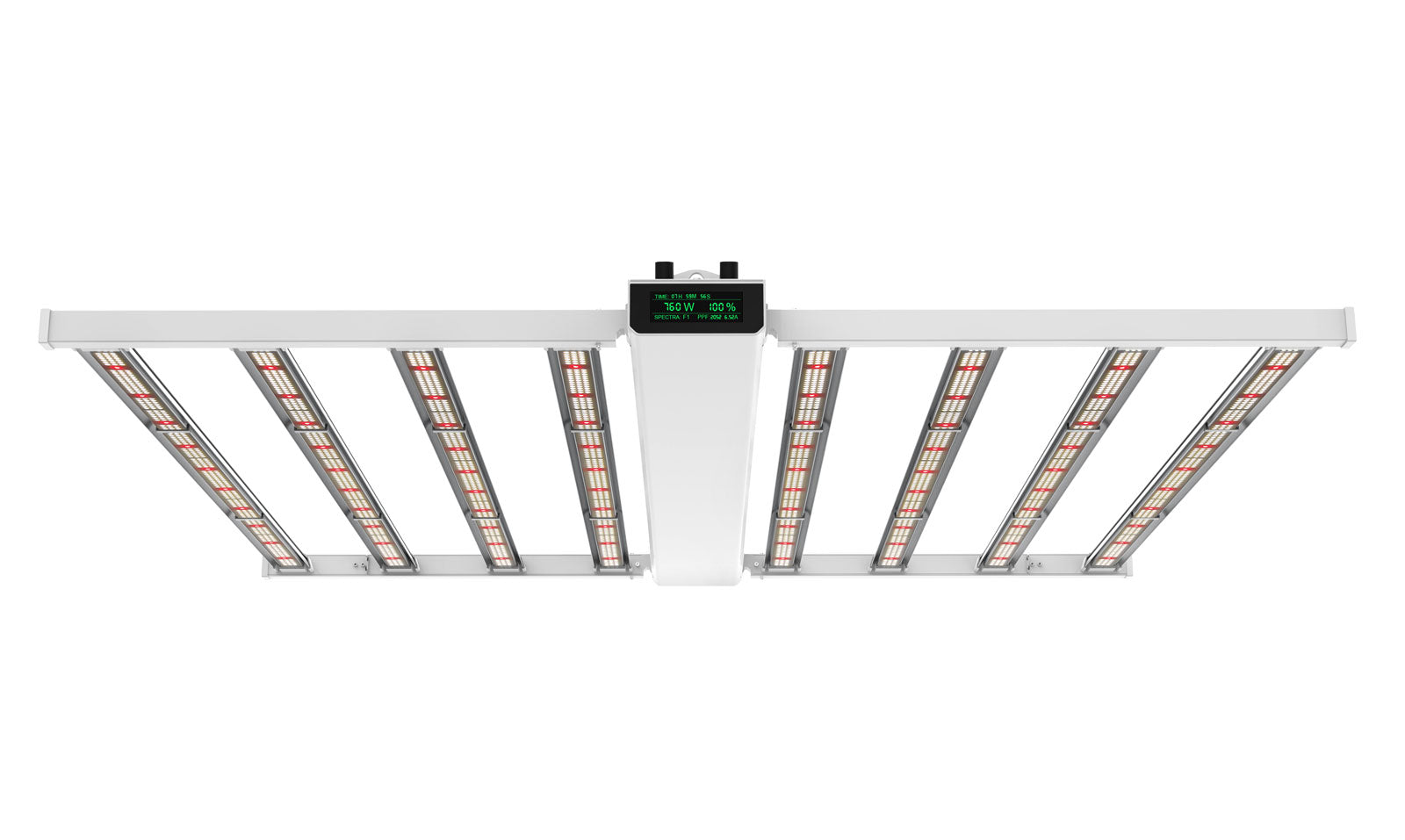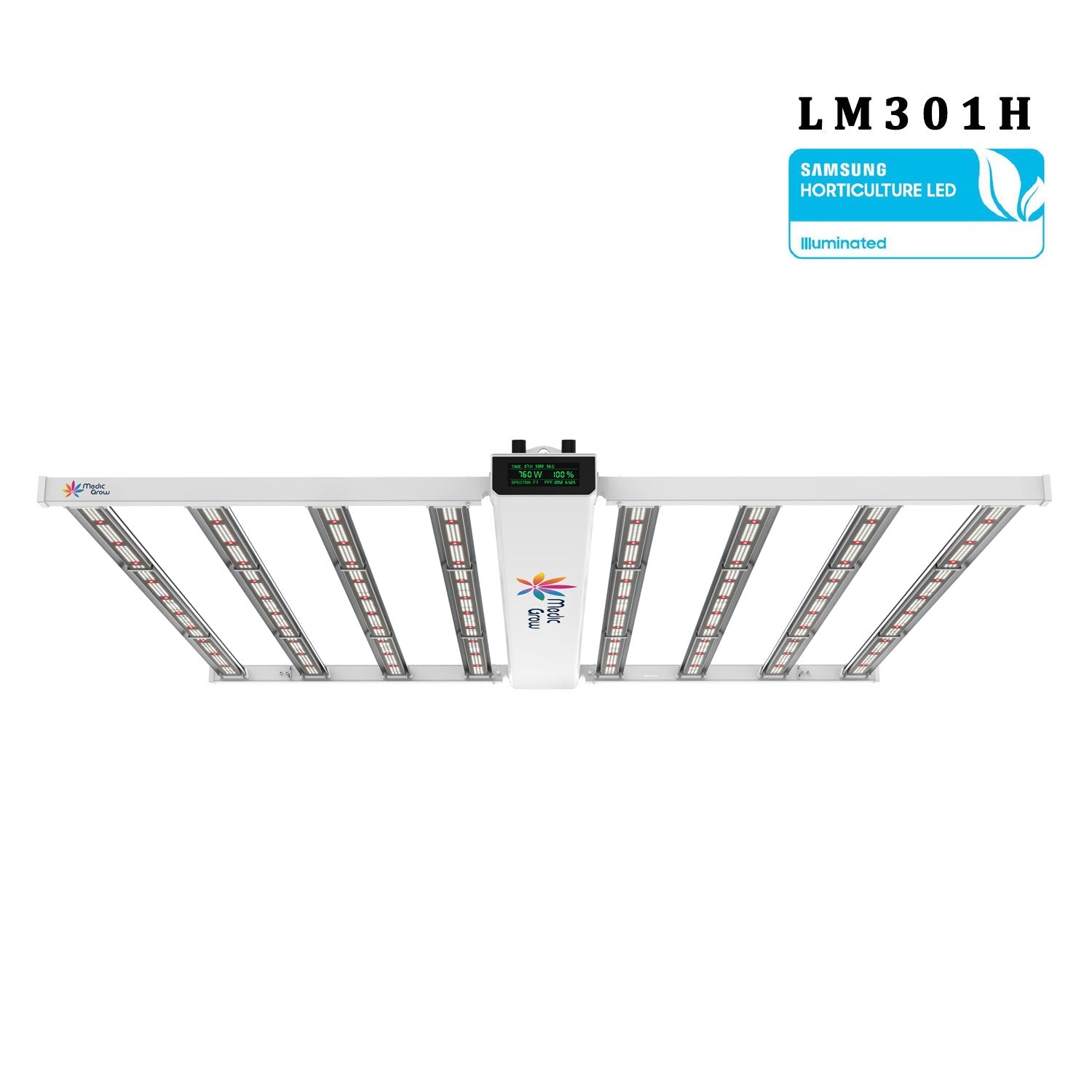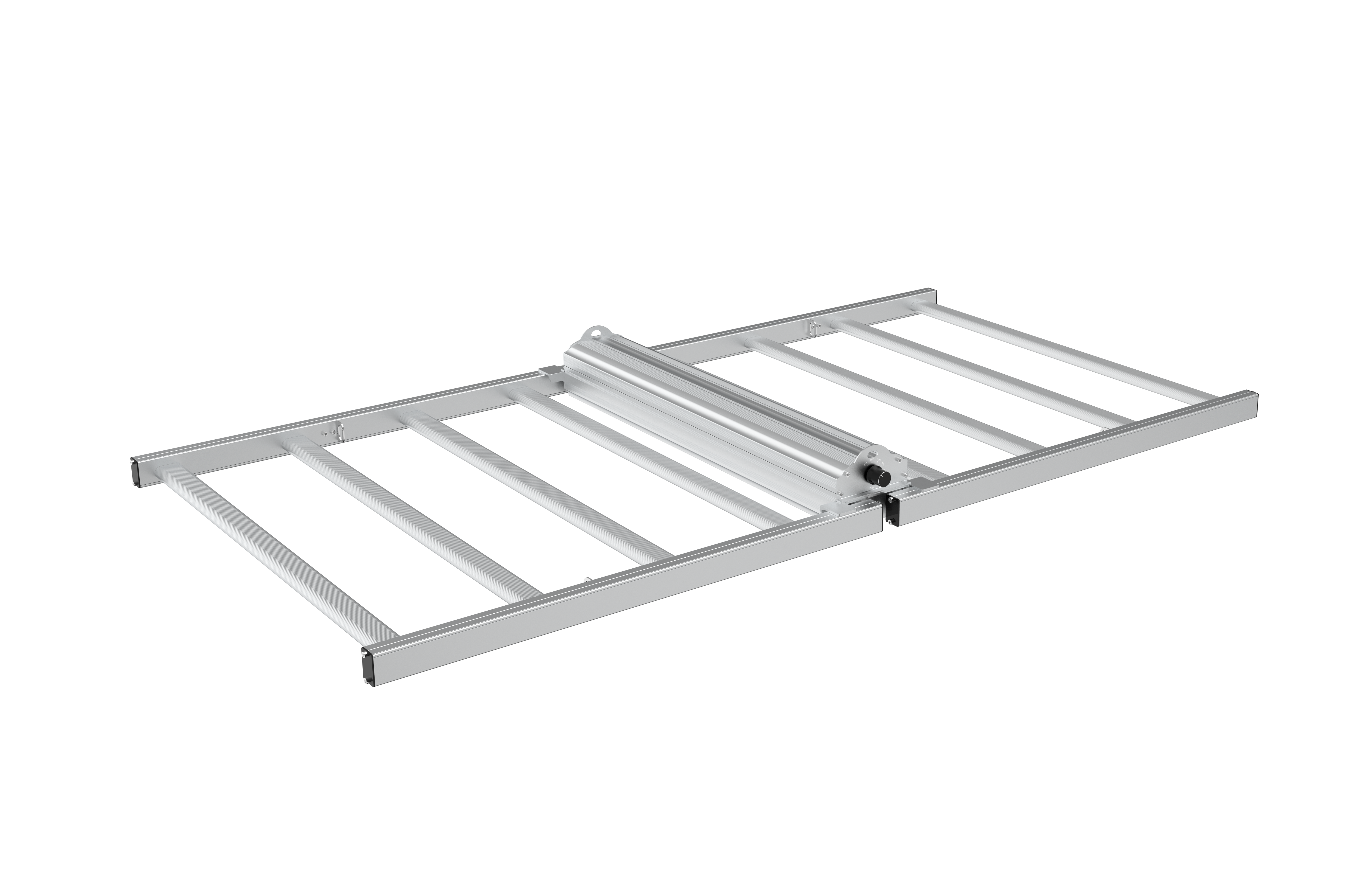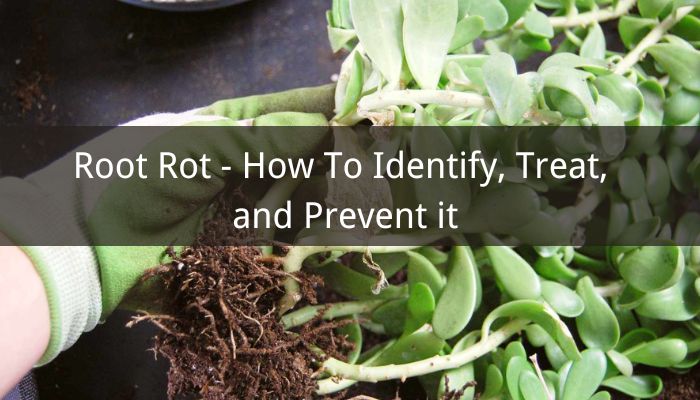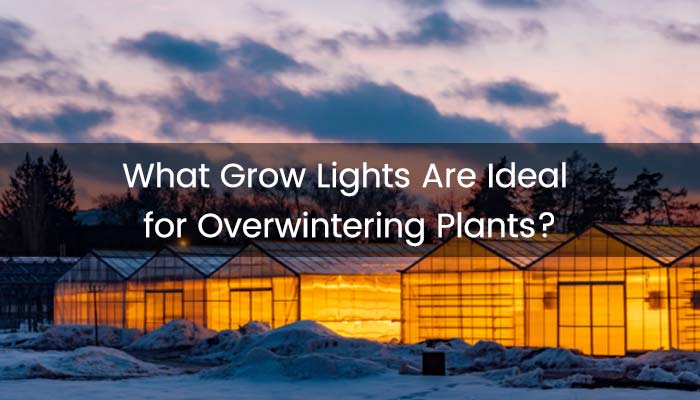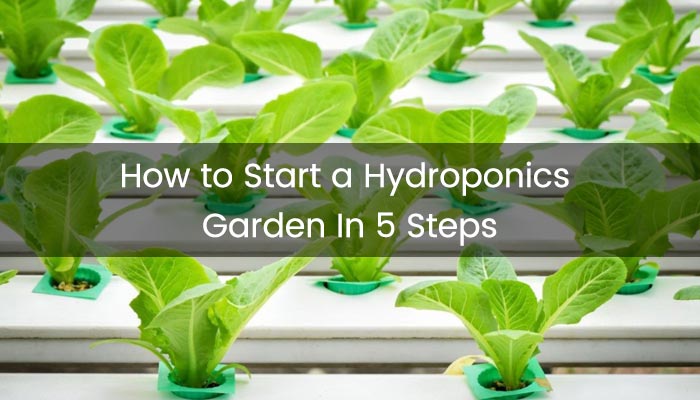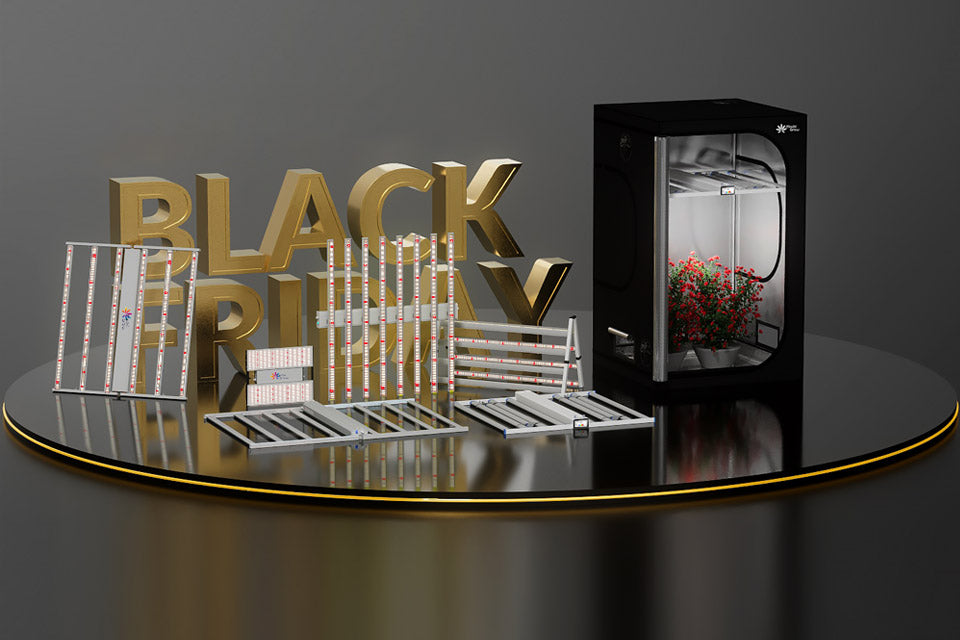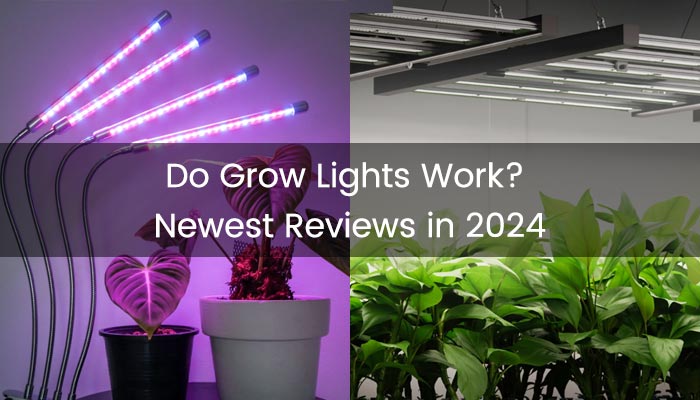
Grow Lights vs LED: Newest Reviews in 2024
When it comes to indoor gardening, one of the most common debates is Grow Lights vs LED. Traditional grow lights, like HPS or fluorescent, have been used for years, but LED grow lights have gained popularity due to their energy efficiency, longer lifespan, and customizable spectrum. In this article, we'll explore the differences between these lighting options and help you decide which is best for your plants.
Main Content:
- 1. Benefits of LED Grow Lights
- 2. LED Grow Lights vs HPS
- 3. LED vs HID Grow Lights
- 4. LED vs Fluorescent Grow Lights
- 5. The Most Trusted LED Grow Lights Brand
Benefits of LED Grow Lights
LED grow lights are the most popular grow lights because of their energy efficiency, adjustable light spectrums, and low heat output, making them suitable for a wide range of plants and growth stages. I listed the 7 reasons for their popularity below.
Energy Efficiency
Studies have shown that LED grow lights offer advantages over traditional high-intensity discharge (HID) lights in terms of energy efficiency and plant growth rate.
According to the U.S. Department of Energy (DOE), LED grow lights are approximately 50% more energy efficient than traditional HID lights.
This means that LED lights consume significantly less electricity for the same light output, reducing energy consumption and electricity bills.
If you are in a country with high electricity costs, such as Germany, opting for LED grow lights will save you a considerable amount of money on your electricity bill.
Long Lifespan
LED grow lights typically last between 50,000 and 100,000 hours, which translates to over a decade of continuous use under standard growing conditions.
One published by the Illuminating Engineering Society (IES), indicates that LED lights maintain their performance over a much longer period with minimal degradation in light output.
This longevity is due to the solid-state technology used in LEDs, which is more durable and less prone to wear and tear.
So, while the initial investment in LED grow lights may be higher than traditional lights, the maintenance and replacement costs are lower.
Full-Spectrum Light
Many LED plants grow lights offer full-spectrum lighting that mimics natural sunlight, supporting all stages of plant growth. This leads to faster vegetative growth and higher-quality flowers.
A study published in the Journal of Horticultural Science demonstrated that plants grown under full-spectrum LED lights exhibited 20% faster vegetative growth compared to those grown under traditional lighting.
Another study, conducted by researchers at the University of California, found that plants grown under full-spectrum LED lights produced higher-quality flowers with more potent profiles.
In summary, the ability of full-spectrum LED grow lights to replicate natural sunlight and support every stage of plant growth makes them an invaluable tool for growers.
Customizable Light Spectrum
Customizable light spectrum is one of the most advanced features of modern LED grow lights, allowing growers to tailor the light output to match the specific needs of plants at different growth stages.
This feature is particularly evident in high-end models like the Medicgrow NEO 1000W grow light, which can fine-tune the light spectrum to emit specific wavelengths.
A study from the University of Guelph's Controlled Environment Systems Research Facility found that when growers adjusted the light spectrum to match the specific needs of their crops, they could significantly improve both the quality and quantity of the yield by up to 30%.
For example, tailoring the light spectrum during the flowering phase led to about 15% higher concentrations of desirable compounds and improved flower density and yields.
Low Heat Output
LED grow lights, particularly those designed with efficient heat management systems like aluminum exteriors, produce significantly less heat compared to traditional grow lights such as HID or fluorescent lamps.
A study published in the Journal of Applied Horticulture found that plants grown under LED lights experienced about 35% less heat stress, leading to improved overall health and faster growth rates.
The study highlighted that the low heat emission from LED lights not only prevents the leaves from scorching but also maintains a more stable and optimal temperature around the plant canopy.
This low heat output is particularly beneficial for indoor cultivation, where maintaining the right temperature and humidity levels is crucial for successful plant growth.
Environmentally Friendly
LED grow lights are increasingly recognized as an environmentally friendly option for plant cultivation, thanks to their non-toxic components, recyclability, and long lifespan.
A study conducted by the U.S. Department of Energy highlights that LED lights contribute significantly less to environmental pollution due to their mercury-free composition and lower energy consumption.
Another report published by the International Energy Agency (IEA) indicates that the extended operational life of LEDs contributes to approximately 30% reduction in the overall carbon footprint associated with lighting, as fewer lights need to be produced and replaced.
So whether you are an environmentalist or not, LED grow lights will be the best choice for you to save money, protect the environment and promote indoor plant growth.
Better Light Penetration
The ability of certain LED grow lights to penetrate the plant canopy more effectively is a significant advantage in promoting overall plant health and maximizing growth.
Lights like the Medicgrow Spectrum, which includes UV light for plants, are designed to ensure that even the lower leaves and shaded areas of the plant receive sufficient light.
A study published in the Journal of Horticultural Science & Biotechnology found that LED lights with a well-distributed spectrum, particularly those including UV and far-red light, can increase photosynthesis by about 15% throughout the plant, resulting in a significant boost in overall growth.
In conclusion, a growing body of research supports the advantages of LED grow lights in terms of energy efficiency, environmental friendliness, and plant growth promotion.
These studies confirm that the use of LED grow lights not only reduces power consumption and protects the environment, but also promotes rapid plant growth by providing more efficient light, making them ideal for modern agriculture and home gardening.
If you're still unsure about what type of light is best for your plants, take a look at the detailed comparison below. It covers various usage scenarios, plants, and functions to help you make an informed decision.

LED Grow Lights vs HPS
Before comparing LED grow lights vs HPS, let's first understand what HPS lights are. HPS lights (High-Pressure Sodium) are one of the HIDs and are known for their high light output, which is especially beneficial during the flowering stage of plants. However, compared to grow LED lights, they generate more heat, consume more energy, and typically have a shorter lifespan.
On the other hand, LED lights are more compact and have better heat dissipation, making them ideal for indoor growers using grow tent kits. It is worth mentioning, that some manufacturers such as Medicgrow, have developed grow lights with timers that can regulate the light intensity, spectrum, and timing of 50 to 200 devices simultaneously, making LED lights easier to manage.
These advantages make LED grow lights highly superior for large-scale and commercial cultivation and more worth buying. So if you're more focused on flowering plants, HPS lights are a good choice, but if you're thinking about heat, energy efficiency, and management, then I'd recommend LED grow lights.
LED vs HID Grow Lights
When comparing HID grow lights and LED grow lights, the advantages of LED grow lights are far greater—it's like comparing the iPhone 15 to the iPhone 6; they belong to different eras. Here are the reasons why many people prefer LED to HID grow lights.
Energy Efficiency
LED grow lights for plants are significantly more energy-efficient than HID grow lights. They consume less power while delivering the same or even higher light output. This translates into lower electricity bills for growers and a smaller carbon footprint.
On the other hand, HID grow lights, including HPS and MH bulbs, require more energy to produce high-intensity light. This results in higher operating costs and electric bills. As a result, LEDs are replacing HID lights as both individual and commercial grow lights.
Spectrum and Light Intensity
LED grow lights for indoor plants offer a customizable spectrum and light intensity with the smart control system, allowing growers to tailor the light to the specific needs of their plants at different growth stages.
HID grow lights, however, have fixed spectrums. This lack of flexibility can be limiting, especially for those growing a variety of plant types or plants that need both blue and red light in different growth stages.
Smart Control System
Many modern LED grow lights like Medicgrow are equipped with smart control systems. These smart chips enable features such as remote control light schedules and intensity adjustments via apps. They also allow the ability to gradually adjust light intensity to mimic sunrise and sunset for softer light changes.
These advanced features are particularly beneficial for large-scale and commercial growers, as they simplify the process of managing multiple lights. HID grow lights, by contrast, typically lack such integrated smart controls, requiring manual adjustments and external timers, which can be less convenient and efficient.
Heat Dissipation and Compactness
Grow LED lights are designed to emit less heat, making them ideal for smaller spaces and grow tents where heat management is crucial for plants' healthy growth.
Their compact and less heat design is also more suitable for small grow tent kits and reduces the need for additional cooling equipment. In contrast, HID grow lights generate a lot of heat, which can be challenging to manage in confined spaces.
To sum up, whether you're a personal grower or a commercial grower, in comparison with HIDs, LED grow lights are superior as they are more energy efficient, emit less heat dissipation, and are easier to manage.

LED vs Fluorescent Grow Lights
Fluorescent grow lights, such as CFL and T5, are often chosen for small setups and beginners due to their lower upfront costs and cooler operation. However, I believe LED growing lights are a better investment. What are the differences between LED and fluorescent grow lights?
Grow LED lights are suitable for a wide range of plants, from leafy greens and herbs to vegetative and flowering plants. In contrast, fluorescent lights are for low-light plants, seedlings, and leafy greens. Their fixed spectrum and lower light intensity limit their use, often requiring more fixtures to achieve the same results as LEDs.
In summary, LED grow lights are the best grow lights for indoor plants, whether you're a hobbyist or a professional grower looking to profit from indoor or large-scale cultivation, LEDs can meet all your growing needs.

The Most Trusted LED Grow Lights Brand
After thoroughly comparing various grow lights, it’s evident that LED grow lights stand out as the top choice for indoor plants. While they may come with a higher upfront cost, the long-term benefits far outweigh the initial investment.
Cheaper alternatives might seem appealing, but they often fall short of delivering the consistent, high-quality light that indoor plants require for optimal growth.
Notably, Medicgrow LED grow lights feature adjustable spectra and high-quality Samsung diodes, ensuring your plants receive the optimal light they need at every growth stage. If you're serious about your indoor gardening, definitely choose Medicgrow!
Related Posts:
Are LED Grow Lights Harmful to Humans?
How to Use LED Grow Lights for Indoor Plants?
FAQs about Grow Lights
1. What Type of Light Is Best for Growing Plants Indoors?
The best grow lights for indoor plants are full-spectrum LED grow lights. These lights mimic natural sunlight by providing a wide range of wavelengths necessary for all stages of plant growth. LED grow lights are also energy-efficient and have a longer lifespan compared to other types of grow lights.
2. Can I Leave My Grow Light on 24 Hours?
Leaving your grow light on 24 hours is not recommended. Plants need a period of darkness to rest and undergo respiration and energy storage, similar to how humans need sleep. The ideal light schedule is 18 on/6 off during the vegetative stage, and 12 on/12 off during the flowering stage.
3. How High Should I Hang My LED Grow Light?
Generally, during the seedling stage, hang the light 24-36 inches above the plants. For the vegetative stage, lower it to 18-24 inches. During the flowering stage, position the light 12-18 inches above the canopy. Always check the manufacturer's guidelines for more precise recommendations.
Featured Products
Blog Posts
Contact Us with Any Idea!
- Choosing a selection results in a full page refresh.
!













